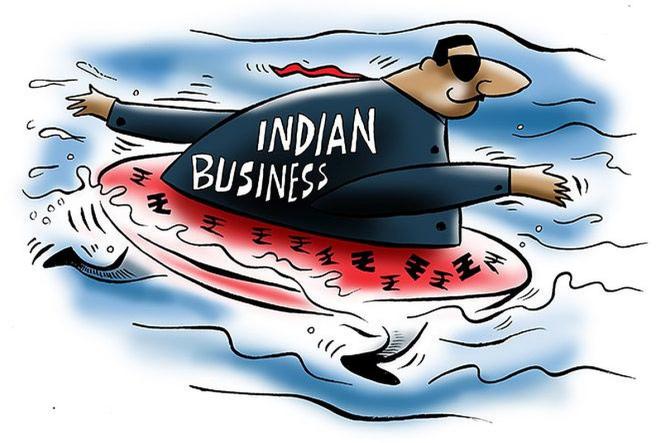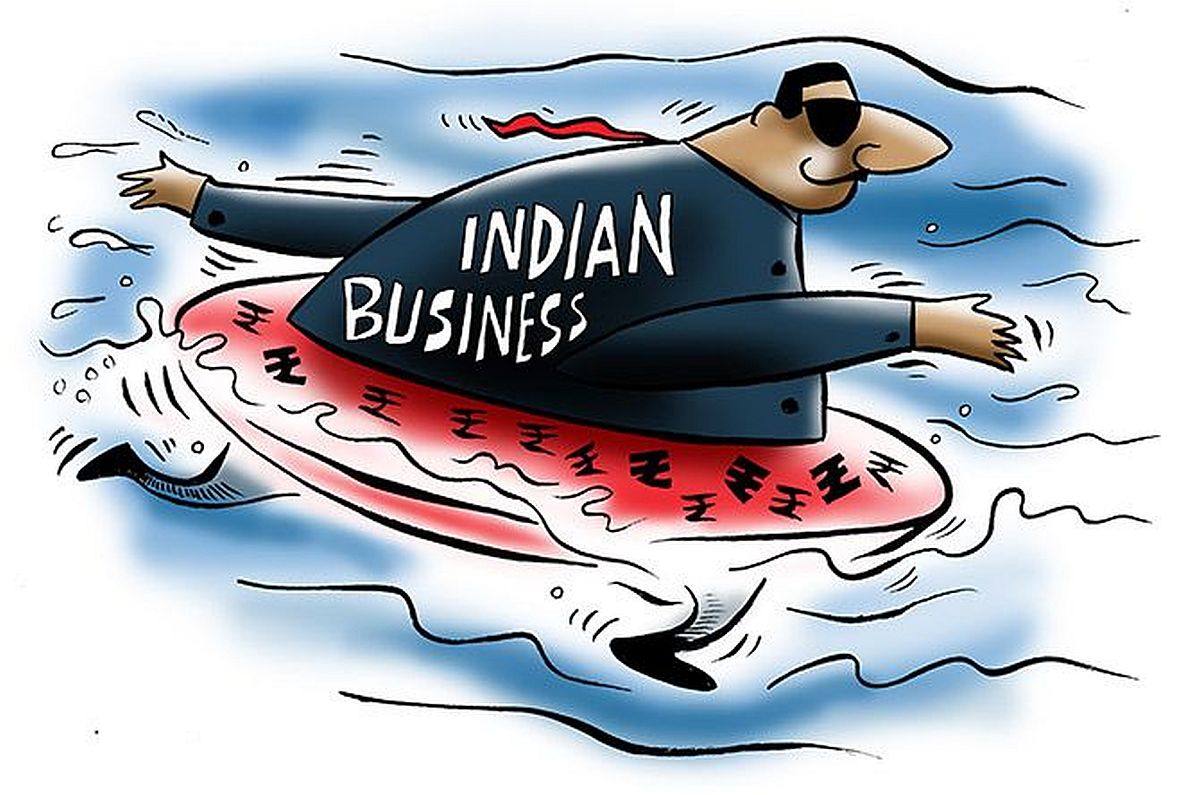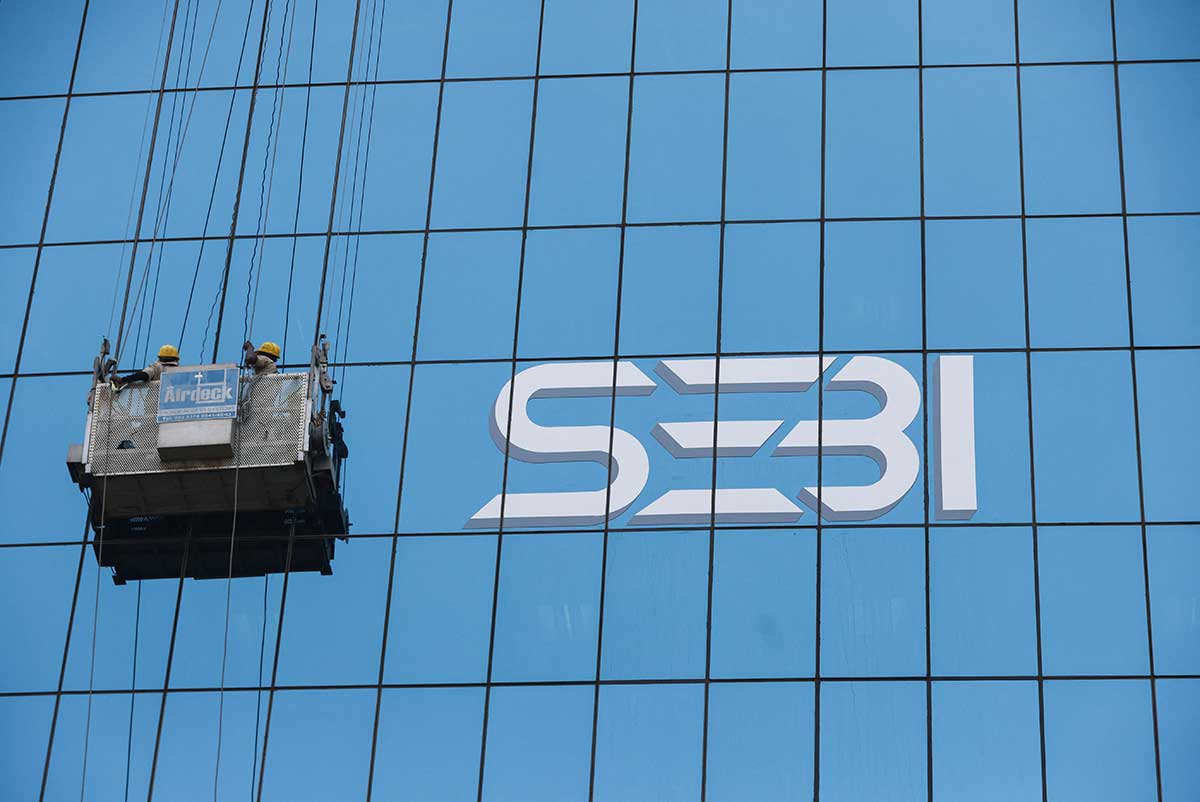Credit quality of Indian corporate is expected to be stable in the second half of the current financial year (H2FY26), supported by easing monetary cycle, and declining inflation, coupled with income-tax relief and rationalisation of the goods and service tax (GST) rates, among others.

Illustration: Uttam Ghosh
However, the export-oriented sectors remain vulnerable to the global macroeconomic headwinds and trade negotiations.
Crisil Ratings said there were 499 upgrades and 230 downgrades in its rating universe in H1FY26.
Ratings credit ratio, or the proportion of rating upgrades to downgrades, moderated to 2.17 times in H1FY26 from 2.75 times in the second half of last financial year (H1FY25).
According to India Ratings, overall there were 214 upgrades and 75 downgrades across sectors in H1FY26, with financial sector and chemicals and petrochemical sectors due to asset quality related concerns in the former and subdued global demand and overcapacity in the latter.
Experts at CareEdge observed that the steady domestic demand and the government’s infrastructure push sustained upgrade momentum, with nearly 40 per cent of all upgrades being linked to infrastructure.
However, small-sized auto ancillaries and dealers, chemical manufacturers, small finance banks (SFBs) and NBFCs exposed to microfinance and unsecured business loans bore the brunt of challenges, emerging as the sectors with the highest downgrades amid pricing pressures and asset-quality concerns.
Going forward, on the domestic front, growth is expected to be supported by monetary easing along with declining inflation, and prospect of above-normal rainfall in 2025 which is expected to boost consumption and investment sentiment, analysts at India Ratings said.
However, they also remained “cautiously optimistic” due to demand related uncertainties and looming geo-political risks.
Somasekhar Vemuri, senior director, Crisil Ratings said, “Favourable domestic consumption and steady government-led infrastructure capex will bolster corporate India’s cash flows.
“We expect revenue growth to sustain at 8 per cent this financial year, while Ebitda margin is seen steady at 12 per cent.
“Additionally, balance sheet leverage near decadal lows (gearing at 0.5 time) affords manoeuvrability if global headwinds intensify.
“While export-oriented sectors remain vulnerable to the global macroeconomic headwinds, positive outcomes from trade negotiations, including bilateral agreements with large economies such as the US and the European Union, and further domestic policy support could offset the impact,” Vemuri added.
According to Sachin Gupta, executive director and chief rating officer, CareEdge Ratings, export-heavy sectors may face margin pressures in the near term, even as resilient balance sheets and steady domestic demand continue to cushion the impact.
“The fact that merchandise exports to US account for just 2 per cent of India’s GDP, with smartphones and generic pharmaceuticals currently outside the tariff ambit, provides some buffer against immediate large-scale disruption,” he said, adding that if tariffs persist, the second-order effects —such as weakening competitiveness, diversion of capital from export-linked industries, and slower investment flows — could weigh on medium-term credit quality.
“Going forward, global trade realignments will be the key swing factor for credit quality,” he further said.
K Ravichandran, executive vice president & chief rating officer, ICRA, said domestic consumption and the government’s sustained focus on infrastructure development are expected to remain the primary growth drivers, amidst global uncertainties and rising protectionist measures.




